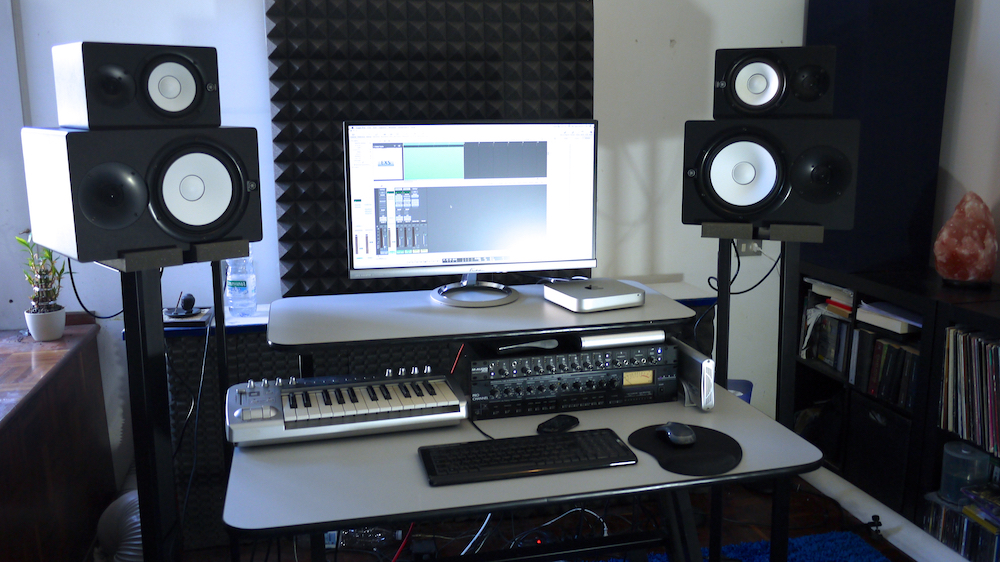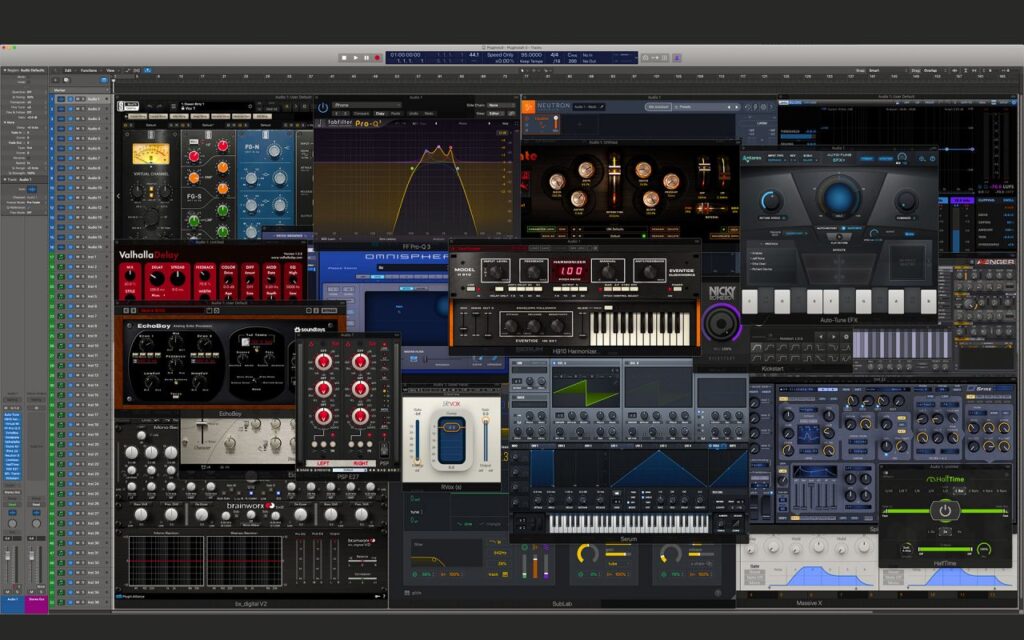You’ll normally find lots of studios with racks filled with analog processing hardware, acoustic instruments, microphones, and hundreds if not thousands of synth and effects plugins. There is one essential part in the equation that enables the producer or engineer to bring everything together under one “digital” roof — the digital audio workstation.
What is a DAW? A digital audio workstation (DAW) is an device, usually a computer, or software used for the recording, editing and producing of audio files, such as music or podcasts.

For those who have had any involvement with music creation as of late, you should have already noticed ads for DAWs
Most Commonly Used DAW’s
There are DAWs that are specifically designed to be used as recording and music production DAWs, such as Ableton, FL Studio, and Reason, whereas other DAWs, like Pro Tools, Nuendo, and Reaper, are equally suitable for music production, recording, post-production (which incorporates sound design and editing for sound-to-picture mediums such as video commercials and film), mixing, and mastering alike.
Additionally, there are also DAWs that are designed to be full-scale mastering suites, such as Pyramix, SADiE, Sequoia, and WaveLab.
The Basic Elements Of A DAW
What can it be that exactly makes up a DAW?
Essentially, each DAW which you can find out there will feature a successive arrangement view that’s formatted with a timeline for the placement (or arrangement) of audio files as well as other metadata that is essential for the project, such as the tempo and endeavor mark that denote specific functions or events that happen throughout a timeline, for instance.
Depending on the DAW, additionally, you will locate a slew of editing commands or editing tools that you can obtain via a few keystrokes or a few mouse clicks.
Also, DAWs that are intended for music production come with metronomes and time signature and tempo settings that are instantaneously accessible through what’s known as a transport, which can be where the basic “play”, “stop”, “record”, “rewind”, and “fast forwards” orders are located.
Read more in the book “Principles of Digital Audio“
For example, let’s take a look at Logic’s arrangement view:

At the bottom, you’ll see the transport view denoting the location of the playhead in both SMPTEtimecode and bars and beats along with the location of the start and end phases of the cycle or “loop” device (a.k.a. the green rectangular “blob” on top of the blue audio region on the first audio track, which allows any event to be repeated as much as necessary within a specific interval as defined by the cycle.
To the left, you can see what’s called the “Inspector View”, which displays the level fader and plugin chain of any selected audio or instrument (i.e. MIDI) track that is inserted into Logic. However, to view all of the tracks at once in this fashion, you can pull up the mix view by pressing “X” to toggle the view underneath the arrangement or pressing “CMD+2” (on the alpha-numeric row) to pull it up as a separate window.
Locked and Loaded
While using third party plugins is definitely a necessity for many a producer, certain DAWs, like Logic Studio come well-equipped with a commendable variety of brilliant and highly successful stock plugins that you can pop right onto your tracks. In Logic, you’ll find 80 plugins which are invaluable for pulling off all sorts of astonishing effects or creating gnarly bass and lead tones together with various sounds that are intriguing and otherworldly, like a number of the following plugins:

No, Not That Kind of Bus
All DAWs attribute what are called “buses”, which are just paths for audio or MIDI to be routed through for the purposes of implementing an effect to a sound without modifying or altering the first sound source, which is commonly known as sidechaining.
Which DAW Sould You Get?
To be honest, it really depends on your overall preferences and what you’re trying to accomplish. If you’re a singer or songwriter and don’t really like the thought of tweaking synths and routing stuff all day long, then something simple like GarageBand would probably do.
Yet, for other producers who want access to more advanced tools including multiband compressors, expanders, exciters, and filters along with an adequate collection of instruments, iterations, and synths to experiment with and tweak to your heart’s content, I’d definitely urge Logic as a starting point.
Obviously, if it’s the case that you are actually on a strict budget and require a solution that could deliver the goods without limiting you to attributes that are small, I’d go download the assessment trial of Reaper.
Reaper is a fantastic DAW with an unbelievable number of attributes and advanced functions that actually make far more high-priced offerings pale compared with its ridiculously low price tags and assessment trial policy that is generous!
That is right people; Cockos (the firm behind Reaper) will let you make use of the trial version of Reaper for so long as you want so that you can freely test it out with your present set up and configure it any way you want.
Good Advice For Beginners And Pros Alike
If you’re completely uncertain concerning what program to start off with and want access to plenty of loops and stock synths that are of decent quality, your best deal will surely be Logic Studio, as it comes fully loaded with up to 50 GB of high-quality loops that span a broad variety of genres along with sound effects for post-production purposes, if need be.
Furthermore, as I mentioned before, you can access to tons of plugins and synths which will allow you to produce a quality product in case you understand what you’re doing. Nevertheless, for those of you who discover that they’re sorely lacking in features that are essential as it pertains to audio editing and mixing and have had significant experience with other DAWs, then I strongly advise that you give a try to Reaper.
It is definitely a breath of fresh air to be able to edit, mix, and perform on-the-fly changes with no system belting out so much as a hiccup in the method. At a mere $60 (assuming you do not possess a commercial studio that rakes in more than $25,000 a year) coupled with an endless evaluation license, you just can not go wrong!